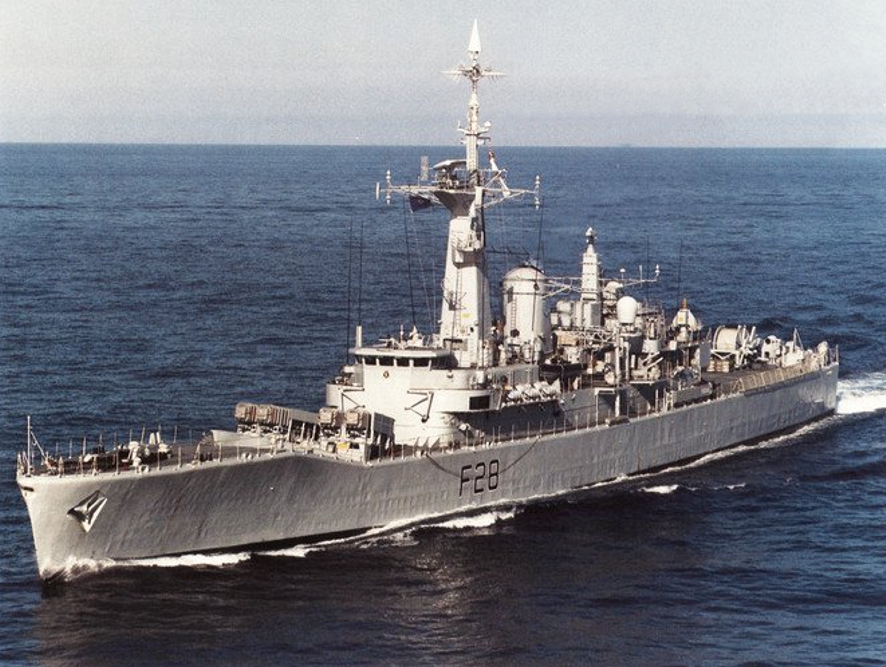
A couple of thoughts on the Australian decision to abandon the Attack-class diesel-electric submarine programme in favor of pursuing a nuclear-powered submarine fleet in co-operation with the USA and UK./1 

This decision, which has apparent bi-partisan support within Australia signals the commencement of what will be by far one of the most significant defence-industrial challenges their country has embarked upon in its history./2 

When Britain decided to explore nuclear submarine propulsion in the early 1950s competing priorities between its atomic weapons programme, civil nuclear industry and an alternate development path: Hydrogen Peroxide propulsion, ultimately placed them far behind the USA./3 

It was only through high-level agreements forged between the First Sea Lord Lous Mountbatten and the Svengali of the 1950s US nuclear navy, Rear Admiral Hyman Rickover, that technical cooperation was resumed from 1956 & sustained through the 1958 US/UK Mutual Defence Agreement./4 



HMS Dreadnought, the first nuclear powered 'Hunter Killer' submarine operated by the Royal Navy was, in essence, the rear-half of a US Skipjack class submarine, with its state of the art S5W Pressurised Water Reactor (PWR), mated to a British 'front end'./5 

Why is this relevant to the new AUKUS submarine plans? Because Britain in the late 1950s had a large and advanced conventional submarine-building programme as well as the industry and expertise to back it up. The RN built 24 new diesel electric submarines between 1945 and 1960./6 

Australia has little of this sort of existing industry to build upon, many of their problems pursuing a domestically-built diesel-electric submarine in the form of the now defunct Attack class persist with the decision to go for nuclear propulsion./7 

Australia has almost no domestic nuclear industry to speak of, presently there is a single research reactor operational in the country at Lucas Heights near Sydney. It is mainly used to produce medical isotopes and isn't involved in power generation./8 

This means that all the associated technology and potentially the actual submarine reactors themselves, will almost certainly need to be imported. This does present some major challenges, establishing a native nuclear reactor manufacturing capability could take a decade or more/9
There are essentially three partners available for this aspect of the programme: General Electric, manufacturers of the S9G reactor in the latest Virginia class attack submarines for the US Navy./10 



Bechtel Marine Propulsion, manufacturers of the S1B reactor in the US Navy's new Columbia class ballistic missile submarines and the A1B reactor in the Gerald R. Ford class aircraft carriers./11 





And finally Rolls Royce Power Operations, manufacturer of the PWR-2 reactor, currently being installed in Britain's remaining Astute class attack submarines, as well as the Anglo-American PWR-3 reactor for the Dreadnought class ballistic missile submarines./12 





A decision to import reactors for its first generation of nuclear-powered submarines would likely speed the process of getting boats into service but, unlike the UK in the 1950s, Australia does not have a robust submarine industry to build upon./13
The whole enterprise will have to be built from a very low base. The Australian Submarine Corporation (ASC) have not been involved in building a new boat since the delivery of HMAS Rankin in 2003. 18 years ago./14 

As for what type of Boat the Australians decide to acquire the options are interesting, but all present their own challenges.
While the US Virginia class is extremely capable, it would likely be substantially more costly and complex boat for a 'beginner' to build and operate/15
While the US Virginia class is extremely capable, it would likely be substantially more costly and complex boat for a 'beginner' to build and operate/15
There is also a question about whether the significant land-attack focus of the newer versions of the Virginia (Block V onwards), presently being built for the US Navy, fits especially well with what Australia wants out of a nuclear fleet boat./16 

The British Astute design, while 'simpler' in some respects, due to the lack of the Virginia's vertical launch modules, is fundamentally an artisanal product. Developments over the long build period mean that no two boats are quite the same./17 

and the later Astutes include significant design changes from the earlier ones. These boats are also built around the PWR2 Core H reactor, which is no longer in production./18
Adaption to fit a different reactor would require huge design changes and it would likely be easier to start wholly from scratch with the desired power plant./19
An interesting alternative might be to pursue an interim solution and 'bandwagon' with the UK on the most likely more modest SSN(R) design which will begin to replace the Astute class in the mid-late 2030s. Buying Australia time to build the required domestic industrial base./20 

Alternatively they may decide to integrate shared US/UK technology into a wholly new design, likely worked up with substantial assistance. While a bit of a 'wildcard' option, this could help better align the final product with Australia's specific needs./21
A partly home-designed boat would also go some way towards, over time, building the skills base to become less dependent upon the other AUKUS members for all aspects of Australia's nuclear submarine programme./22
Either way they have an enormous journey ahead of them, which will be fraught with the challenges that keep most states out of the nuclear-powered submarine game.
As for the positives, they could not have done better than having both the US and UK on side in this endeavor./23
As for the positives, they could not have done better than having both the US and UK on side in this endeavor./23
Engaging Strategy, Out.
@DavidLarter @Verdigris_blog @CO_RedBlack @cdrsalamander @thinkdefence @UKDefJournal @navalhistorian @AC_NavalHistory @StrategyBin @edin_thinker @NavMechEng @fightingsailor @Gabriel64869839 @LatestMessiah @GazTheJourno @geoallison @defondel @pinstripedline @harry_lye
@DavidLarter @Verdigris_blog @CO_RedBlack @cdrsalamander @thinkdefence @UKDefJournal @navalhistorian @AC_NavalHistory @StrategyBin @edin_thinker @NavMechEng @fightingsailor @Gabriel64869839 @LatestMessiah @GazTheJourno @geoallison @defondel @pinstripedline @harry_lye @simonharley @CovertShores @kejamieson_ @Artemisapphire @chris_k_v @c21st_sailor @kjatsea @NavyLookout @AlexLuck9 @mercoglianos @SRDMaguire @alessionaval @Strategyforwar1 @spj1958 @DefenceViper
• • •
Missing some Tweet in this thread? You can try to
force a refresh




















